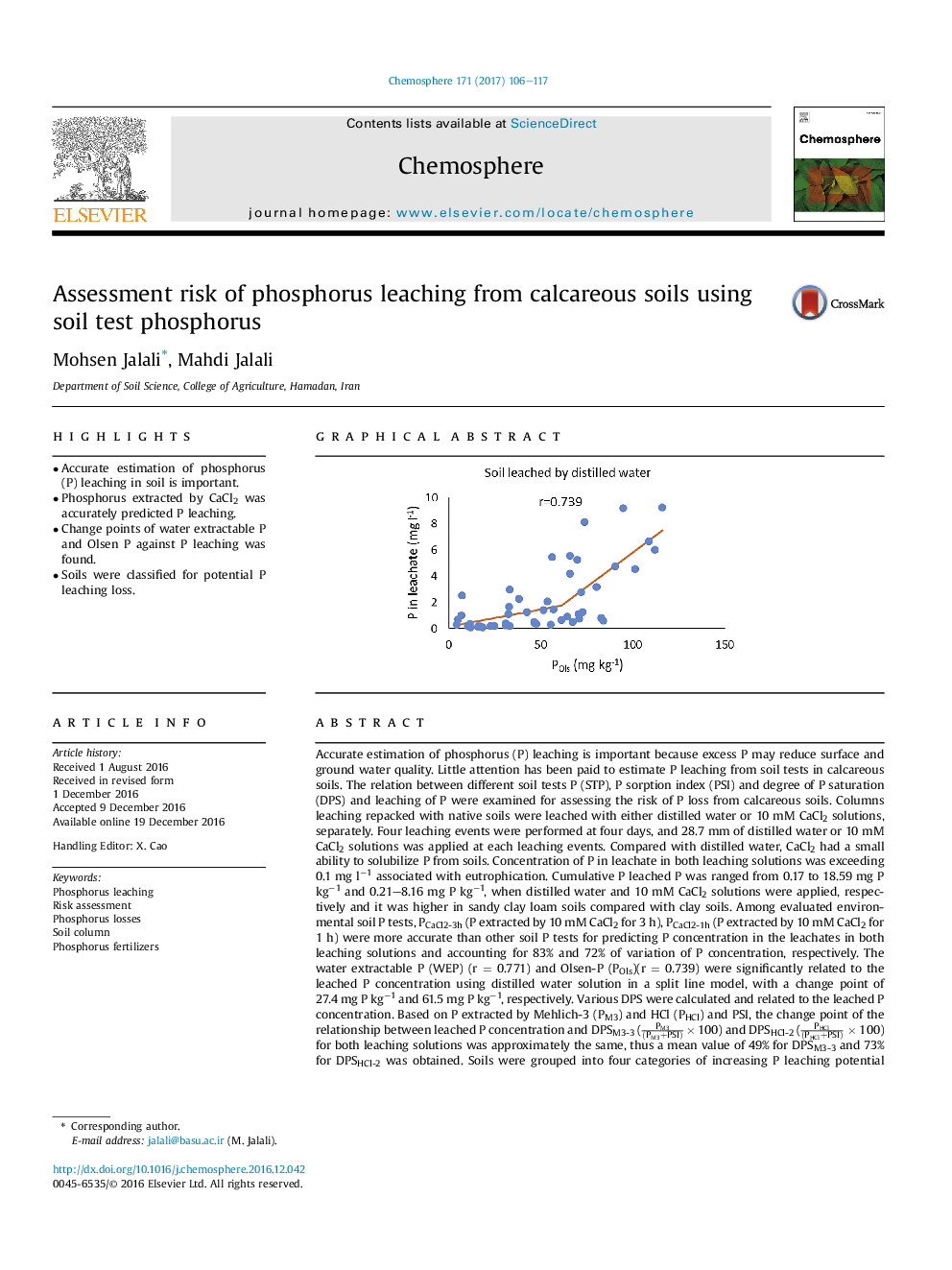| کد مقاله | کد نشریه | سال انتشار | مقاله انگلیسی | نسخه تمام متن |
|---|---|---|---|---|
| 5746354 | 1618800 | 2017 | 12 صفحه PDF | دانلود رایگان |
- Accurate estimation of phosphorus (P) leaching in soil is important.
- Phosphorus extracted by CaCl2 was accurately predicted P leaching.
- Change points of water extractable P and Olsen P against P leaching was found.
- Soils were classified for potential P leaching loss.
Accurate estimation of phosphorus (P) leaching is important because excess P may reduce surface and ground water quality. Little attention has been paid to estimate P leaching from soil tests in calcareous soils. The relation between different soil tests P (STP), P sorption index (PSI) and degree of P saturation (DPS) and leaching of P were examined for assessing the risk of P loss from calcareous soils. Columns leaching repacked with native soils were leached with either distilled water or 10 mM CaCl2 solutions, separately. Four leaching events were performed at four days, and 28.7 mm of distilled water or 10 mM CaCl2 solutions was applied at each leaching events. Compared with distilled water, CaCl2 had a small ability to solubilize P from soils. Concentration of P in leachate in both leaching solutions was exceeding 0.1 mg lâ1 associated with eutrophication. Cumulative P leached P was ranged from 0.17 to 18.59 mg P kgâ1 and 0.21-8.16 mg P kgâ1, when distilled water and 10 mM CaCl2 solutions were applied, respectively and it was higher in sandy clay loam soils compared with clay soils. Among evaluated environmental soil P tests, PCaCl2-3h (P extracted by 10 mM CaCl2 for 3 h), PCaCl2-1h (P extracted by 10 mM CaCl2 for 1 h) were more accurate than other soil P tests for predicting P concentration in the leachates in both leaching solutions and accounting for 83% and 72% of variation of P concentration, respectively. The water extractable P (WEP) (r = 0.771) and Olsen-P (POls)(r = 0.739) were significantly related to the leached P concentration using distilled water solution in a split line model, with a change point of 27.4 mg P kgâ1 and 61.5 mg P kgâ1, respectively. Various DPS were calculated and related to the leached P concentration. Based on P extracted by Mehlich-3 (PM3) and HCl (PHCl) and PSI, the change point of the relationship between leached P concentration and DPSM3-3 (PM3(PM3+PSI)Ã100) and DPSHCl-2 (PHCl(PHCl+PSI)Ã100) for both leaching solutions was approximately the same, thus a mean value of 49% for DPSM3-3 and 73% for DPSHCl-2 was obtained. Soils were grouped into four categories of increasing P leaching potential based on WEP, POls, and DPSM3-3. The results indicated that 8.00%-25.50% of the soil grouped in no risk category whereas 8.00%-13.70% of the soils fell into the high risk category.
50
Journal: Chemosphere - Volume 171, March 2017, Pages 106-117
